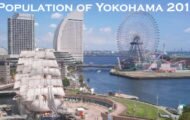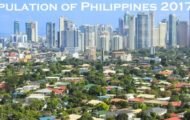Bangladesh is a sovereign state in South Asia. With a population of 170 million, it is the world’s eighth-most populous country, the fifth-most populous in Asia and the third-most populous Muslim-majority country. The official language of Bangladesh is Bengali which is also the seventh-most spoken language in the world, which Bangladesh shares with the neighboring Indian states of West Bengal, Tripura and Assam.

Three of Asia’s largest rivers, the Ganges, the Brahmaputra and the Meghna, flow through Bangladesh and form the fertile Bengal delta that is the largest delta in the world. Bangladesh is very rich in biodiversity with 700 rivers flowing through it and it also has the world’s largest mangrove forest.
The first revolt in India took place in Bengal in 1905, which created the province of Eastern Bengal and made the setting for partition of Bengal in 1947 and was renamed as Eastern Pakistan in 1955 it was separated from West Pakistan by 1,400 kilometers and then the Bangladesh Liberation War in 1971 resulted in the secession of East Pakistan as a new republic with a secular multiparty parliamentary democracy.
Historically renowned for muslin and silk, modern Bangladesh is one of the world’s leading textile producers and earns the highest from the exports of its cloth only.
POPULATION OF BANGLADESH IN 2017:
Talking about population, in order to check out the population of Bangladesh in 2017, we need to have a look at the population of the past 5 years. They are as per the following:
- 2012 – 154.7 million
- 2013 – 156.6 million
- 2014 – 158.3 million
- 2015 – 160.99 million
- 2016 – 162.91 million
BANGLADESH Population 2017 – 164.82 million(Estimated)
Bangladesh is a large and heavily densely populated country in South Asia, bordering Burma, India, Nepal and Bhutan it has a population of 168.9 million in 2016 this makes Bangladesh the 9th most populous country in the world.
During 2016 Bangladesh population is projected to increase by 1 943 484 people and reach 163 900 501 in the beginning of 2017. The natural increase is expected to be positive, as the number of births will exceed the number of deaths by 2 405 062. If external migration will remain on the previous year level, the population will be declined by 461 577 due to the migration reasons.
The daily estimates regarding the population in 2016 has been as such:
9 030 live births average per day (376.24 in a hour)
2 440 deaths average per day (101.69 in a hour)
-1 265 emigrants average per day (-52.69 in a hour)
The population of Bangladesh will be increased by 5 325 persons daily in 2016.
It is also the most densely populated large country in the world, and it ranks 11th in population density, when very small countries and city-states are included.
The population of Bangladesh represents 2.18% of the world’s population which means one in every 46 people on the earth is resident of Bangladesh. After independence in 1971, the population was 71 million people which took a sharp rise to 90.4 million after 1980. Ever since its population has grown decade by decade. The country’s population is almost evenly distributed on average a district has an average population of 1.8 million. Around 120 million that makes it to 80% of the country’s total population lives in rural areas. Measures were taken to curtail the population growth and the annual growth rate has come down to 1.75% with acceptance of family planning norms.
DEMOGRAPHY OF BANGLADESH:
98% of the total population of Bangladesh are ethnic Bengalis with the remaining 2% made up from Biharis and other ethnic tribes. The fertility rate is now at 2.4 children born per woman. Bangladesh has a fairly young population with 34% aged 15 and younger and just 5% aged 65 and older.Bangladesh’s population growth rate was among the highest in the world in the 1960s and 1970s, when its population grew from 65 to 110 million. With the promotion of birth control in the 1980s, the growth rate began to slow. Life expectancy at birth is estimated to be 70 years for both males and females in 2016. Despite the rapid economic growth, 43% of the country still lives below the international poverty line which means living on less than $1.25 per day.
The Hill Tracts are home to 11 ethnic tribal groups, notably the Chakma, Marma, Tanchangya, Tripuri, Kuki, Khiang, Khumi, Murang, Mru, Chak, Lushei and Bawm. The northern Bangladesh region is home to aboriginal Santal, Munda and Oraon people and is also home to a significant Ismaili community.
Child dependency ratio in Bangladesh is 56.1 %. Total life expectancy (both sexes) at birth for Bangladesh is 69.8 years. The overall youth literacy rate is 83.18%.
BANGLADESH POPULATION DENSITY:
The country has a population density of 1,115.62 people per square kilometer,(2,889.45/square mile), which ranks 10th in the world.
Bangladesh gained its independence from Pakistan in 1971 and a nationwide census at the time confirmed that there were 71 million people living here. In 1980, the Bangladesh population had grown to 90.4 million and Census figures are clearly hard to obtain, but the current UN projections have Bangladesh’s population growing until 2053, when it will hold an estimated 202.7 million people. Bangladesh had high rates of population growth in the 1960s and the 1970s, since then however it saw a remarkable fall in fertility rate and over a period of three decades it dropped almost from 7 to 2.4 in 2005-2010.
FACTS ABOUT BANGLADESH:
1. Bangladesh has more than half of the total population into farming. Despite being predominantly agricultural in nature the major export earnings of Bangladesh come from garments industry.
2. An amazing fact about the country says that there are around 2000 journals are published periodically however the total readership data of the country stands at 15% only.
3. The predominant religion in Bangladesh is Islam, with 88.3% of the population adhering to that faith. Among Bangladeshi Muslims, 96% are Sunni, over 3% are Shi’a, and a fraction of 1% are Ahmadiyyas. Hindus are the largest minority religion in Bangladesh, at 10.5% of the population. There are also tiny minorities (less than 1%) of Christians, Buddhists and animists.
4. Bangladesh is home to world’s largest river delta and world’s largest mangrove forests.
5. The Green color in Bangladesh’s flag Stand for the villages of Bangladesh and Red stand for the Freedom.
Find Latest Bangladesh Population in 2018



